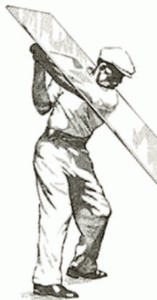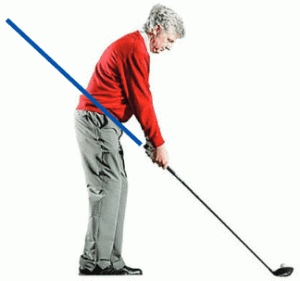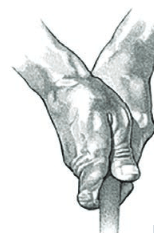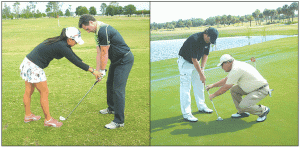Why I Believed Tiger Would Be Tiger Again
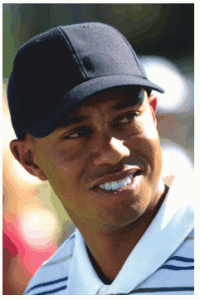 By Mark Harman USGTF Course Director Ridgeland, South Carolina
Brandel Chamblee said he couldn’t compete with today’s young guns. Greg Norman said he’d never return to his previous form. Woody Paige said he’d never win another tournament ever again. Jemele Hill said he should retire. Hank Haney said he had the chipping yips.
Pundits everywhere had a field day doubting Tiger Woods the past few years. And yet here we are again as Tiger has returned to the winner’s circle in a major championship, capturing his fifth green jacket this past April at Augusta National.
If nothing else, Tiger’s return to glory should remind all of us that prognosticating is often a worthless exercise, especially when it comes to what other people can and cannot do. How many times have we read stories about people who have suffered some serious injury and doctors telling them they would never again (pick one: walk, run, play golf, play tennis, go bowling…), only to see people defying what their own doctor, who’s supposed to be an expert, said. While Tiger’s tale isn’t as dramatic as perhaps someone being told they’d be in a wheelchair for the rest of their life only to run a marathon, it goes to show that the will of a strong-minded individual is often no match for what reality supposedly tells us. As Yogi Berra famously said, “It ain’t over ‘til it’s over.”
In the February 2017 edition of our monthly e-newsletter, I wrote the following of Tiger: “I think at minimum he will win two more majors before it’s all said and done, break Sam Snead’s Tour record of 82 victories, and become a top-ten player again…and I would not bet against him regaining the #1 spot at some time.” Unfortunately, in April of that year Tiger had spinal fusion surgery and made my own prediction look somewhat shaky. He even said himself later that year he was unsure if he would ever come back.
But even then, I always thought he would come back and be a major factor again. Part of my reasoning was that Tiger is, well, somewhat of a drama king. I read about other pro golfers having the same surgery and they came back to play well, so I figured Tiger could, too. And with our modern medicine and fitness knowledge, I thought Tiger would be given a way to fully function again.
Another factor in my belief that Tiger would become Tiger again is based on my own personal experience. In 2005 I won the United States Golf Teachers Cup for the fifth time at The Quarry in San Antonio, Texas, and in my victory speech, I said this might well be my last victory, as younger and better players were coming up through the ranks. Players like James Douris and Christopher Richards proved me right, as they captured multiple USGTF and WGTF titles the next few years. I was wrong on the younger part, though, as septuagenarian Bill Hardwick of Canada showed he was still capable of winning against the young bucks.
However, I didn’t really believe what I said in San Antonio; I was merely trying to give credit where credit was due. Surely, I thought, I would win again. But year after year went by, and my old anxiety issues resurfaced around 2010 at the U.S. Cup in Primm Valley, Nevada. They stayed with me for the next five Cups after that, and I often was no factor in our national championship event. I really did start to believe I was done.
And then in 2016 at Talking Stick in Scottsdale, Arizona, I teed off and my mind stayed surprisingly calm. I shot 71 the first round, and opened the second round with three straight birdies. When I learned I had a six-shot lead after 35 holes (I deliberately didn’t pay attention to what anyone else in my group was doing), I realized my own personal comeback was complete. Since then, I’ve been fortunate enough to win the U.S. Cup again, along with the World Cup and World Senior Cup. I say this not to brag, but to point out that we are capable of doing things we either used to be able to do or thought were impossible.
So it was with all this that I thought Tiger, if he stayed healthy, would return to being a dominant force in professional golf again. The final piece to the puzzle of my belief system was that Tiger has been doubted over and over throughout the years, and yet always found a way to prove the doubters wrong.
I realized that many people dislike Tiger for what he has done in his personal life, for his lack of decorum at times on the course, and for public acts like tipping servers poorly and being cold with the fans. I get that and cannot fault someone for not liking him for those reasons. But I also consider him an artist in the mold of Da Vinci and Michelangelo, and a generational athletic talent along with Babe Ruth, Muhammad Ali, Wayne Gretzky and Michael Jordan (and I’m sure Geoff Bryant would want me to add Tom Brady to the list, so I will).
We should all feel fortunate to witness such greatness and to awe at what’s possible in human achievement. I know I am.
By Mark Harman USGTF Course Director Ridgeland, South Carolina
Brandel Chamblee said he couldn’t compete with today’s young guns. Greg Norman said he’d never return to his previous form. Woody Paige said he’d never win another tournament ever again. Jemele Hill said he should retire. Hank Haney said he had the chipping yips.
Pundits everywhere had a field day doubting Tiger Woods the past few years. And yet here we are again as Tiger has returned to the winner’s circle in a major championship, capturing his fifth green jacket this past April at Augusta National.
If nothing else, Tiger’s return to glory should remind all of us that prognosticating is often a worthless exercise, especially when it comes to what other people can and cannot do. How many times have we read stories about people who have suffered some serious injury and doctors telling them they would never again (pick one: walk, run, play golf, play tennis, go bowling…), only to see people defying what their own doctor, who’s supposed to be an expert, said. While Tiger’s tale isn’t as dramatic as perhaps someone being told they’d be in a wheelchair for the rest of their life only to run a marathon, it goes to show that the will of a strong-minded individual is often no match for what reality supposedly tells us. As Yogi Berra famously said, “It ain’t over ‘til it’s over.”
In the February 2017 edition of our monthly e-newsletter, I wrote the following of Tiger: “I think at minimum he will win two more majors before it’s all said and done, break Sam Snead’s Tour record of 82 victories, and become a top-ten player again…and I would not bet against him regaining the #1 spot at some time.” Unfortunately, in April of that year Tiger had spinal fusion surgery and made my own prediction look somewhat shaky. He even said himself later that year he was unsure if he would ever come back.
But even then, I always thought he would come back and be a major factor again. Part of my reasoning was that Tiger is, well, somewhat of a drama king. I read about other pro golfers having the same surgery and they came back to play well, so I figured Tiger could, too. And with our modern medicine and fitness knowledge, I thought Tiger would be given a way to fully function again.
Another factor in my belief that Tiger would become Tiger again is based on my own personal experience. In 2005 I won the United States Golf Teachers Cup for the fifth time at The Quarry in San Antonio, Texas, and in my victory speech, I said this might well be my last victory, as younger and better players were coming up through the ranks. Players like James Douris and Christopher Richards proved me right, as they captured multiple USGTF and WGTF titles the next few years. I was wrong on the younger part, though, as septuagenarian Bill Hardwick of Canada showed he was still capable of winning against the young bucks.
However, I didn’t really believe what I said in San Antonio; I was merely trying to give credit where credit was due. Surely, I thought, I would win again. But year after year went by, and my old anxiety issues resurfaced around 2010 at the U.S. Cup in Primm Valley, Nevada. They stayed with me for the next five Cups after that, and I often was no factor in our national championship event. I really did start to believe I was done.
And then in 2016 at Talking Stick in Scottsdale, Arizona, I teed off and my mind stayed surprisingly calm. I shot 71 the first round, and opened the second round with three straight birdies. When I learned I had a six-shot lead after 35 holes (I deliberately didn’t pay attention to what anyone else in my group was doing), I realized my own personal comeback was complete. Since then, I’ve been fortunate enough to win the U.S. Cup again, along with the World Cup and World Senior Cup. I say this not to brag, but to point out that we are capable of doing things we either used to be able to do or thought were impossible.
So it was with all this that I thought Tiger, if he stayed healthy, would return to being a dominant force in professional golf again. The final piece to the puzzle of my belief system was that Tiger has been doubted over and over throughout the years, and yet always found a way to prove the doubters wrong.
I realized that many people dislike Tiger for what he has done in his personal life, for his lack of decorum at times on the course, and for public acts like tipping servers poorly and being cold with the fans. I get that and cannot fault someone for not liking him for those reasons. But I also consider him an artist in the mold of Da Vinci and Michelangelo, and a generational athletic talent along with Babe Ruth, Muhammad Ali, Wayne Gretzky and Michael Jordan (and I’m sure Geoff Bryant would want me to add Tom Brady to the list, so I will).
We should all feel fortunate to witness such greatness and to awe at what’s possible in human achievement. I know I am.














